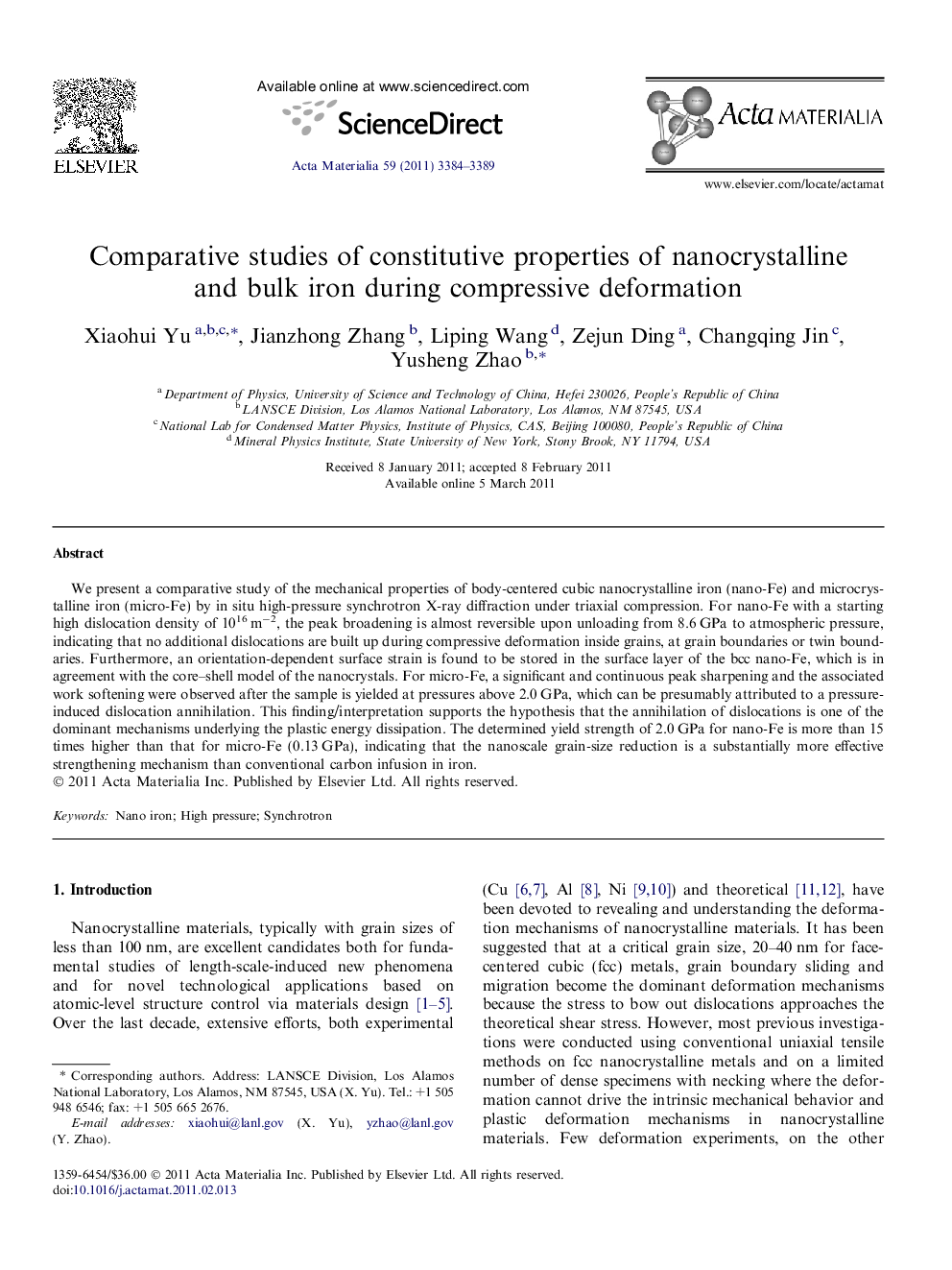| کد مقاله | کد نشریه | سال انتشار | مقاله انگلیسی | نسخه تمام متن |
|---|---|---|---|---|
| 1447137 | 988636 | 2011 | 6 صفحه PDF | دانلود رایگان |

We present a comparative study of the mechanical properties of body-centered cubic nanocrystalline iron (nano-Fe) and microcrystalline iron (micro-Fe) by in situ high-pressure synchrotron X-ray diffraction under triaxial compression. For nano-Fe with a starting high dislocation density of 1016 m−2, the peak broadening is almost reversible upon unloading from 8.6 GPa to atmospheric pressure, indicating that no additional dislocations are built up during compressive deformation inside grains, at grain boundaries or twin boundaries. Furthermore, an orientation-dependent surface strain is found to be stored in the surface layer of the bcc nano-Fe, which is in agreement with the core–shell model of the nanocrystals. For micro-Fe, a significant and continuous peak sharpening and the associated work softening were observed after the sample is yielded at pressures above 2.0 GPa, which can be presumably attributed to a pressure-induced dislocation annihilation. This finding/interpretation supports the hypothesis that the annihilation of dislocations is one of the dominant mechanisms underlying the plastic energy dissipation. The determined yield strength of 2.0 GPa for nano-Fe is more than 15 times higher than that for micro-Fe (0.13 GPa), indicating that the nanoscale grain-size reduction is a substantially more effective strengthening mechanism than conventional carbon infusion in iron.
► Yield strength of nano-Fe (2.0 GPa) is 15 times higher than that of micron-Fe (0.13 GPa).
► Compressive deformation does not build up additional dislocations in nano-Fe.
► Pressure induced dislocation annihilation in micron-Fe during compression.
► Dislocation annihilation is a dominant mechanism for plastic energy dissipation.
Journal: Acta Materialia - Volume 59, Issue 9, May 2011, Pages 3384–3389